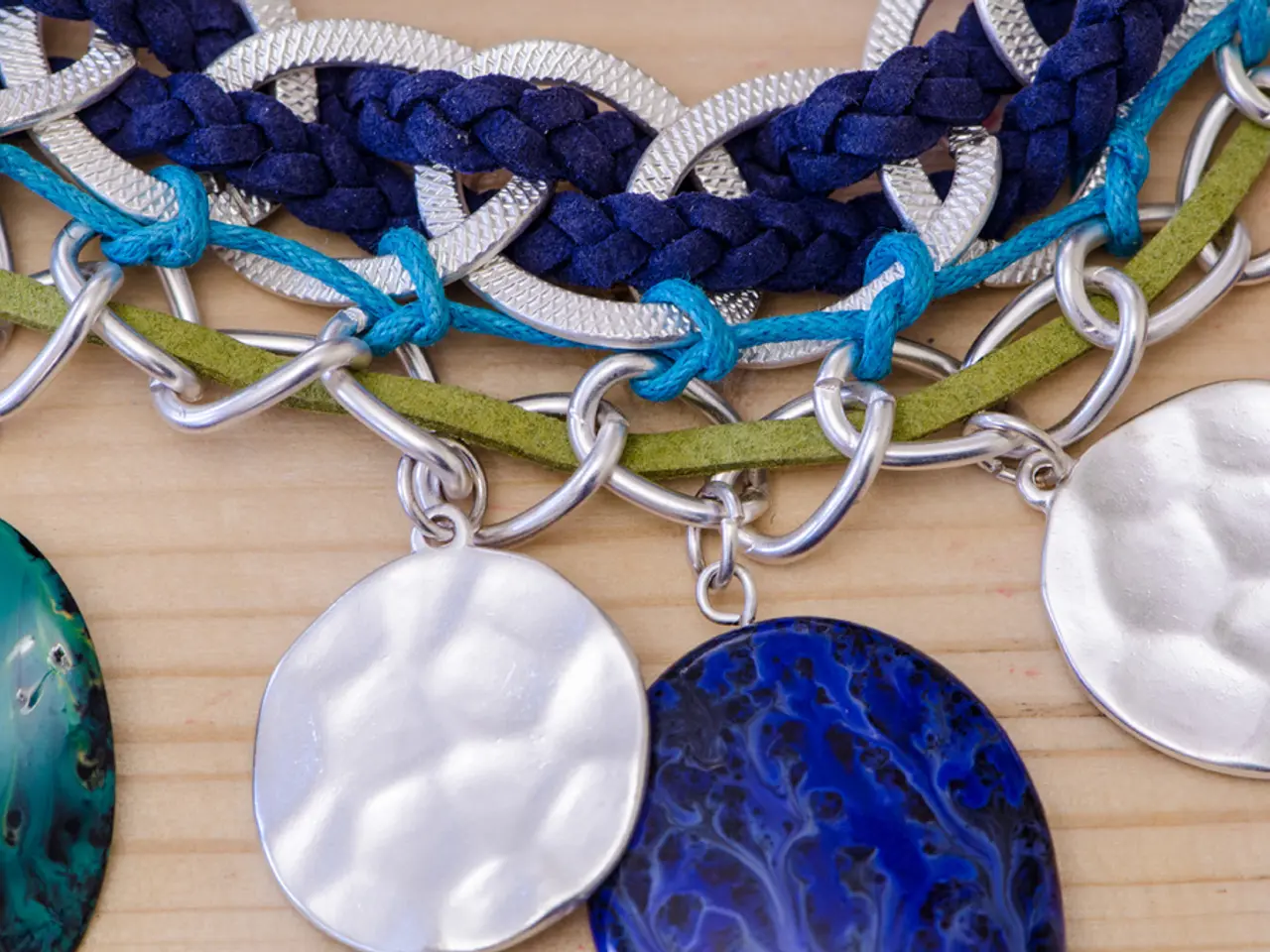Examining the Connection: Quantifying the Hydrogen Bonds Between Adenine and Uracil
In the intricate world of genetic code, Adenine (A) and Uracil (U) serve as the information carriers, with their sequence determining the genetic instructions within RNA molecules. These nucleobases, with Adenine being a purine and Uracil a pyrimidine, play a vital role in numerous biological processes involving RNA.
The specific pairing of Adenine and Uracil is mediated by two hydrogen bonds. These bonds form between A and U, with the N6-H of Adenine bonding with the O4 of Uracil, and the N3 of Adenine bonding with the N3-H of Uracil. These hydrogen bonds are essential for the stability and function of RNA molecules, contributing significantly to their overall stability.
Optimal hydrogen bonds occur when the three atoms involved are aligned linearly, and the specific pairing of Adenine and Uracil follows this principle. However, it's important to note that the two hydrogen bonds between A and U are not equivalent in strength, with the N6-H...O4 bond generally considered stronger than the N3...N3-H bond.
Several factors, including temperature, pH, surrounding environment, and the overall context of the RNA molecule, can influence the strength of these hydrogen bonds. Understanding these dynamics is crucial for developing new technologies in fields such as biotechnology and nanotechnology.
The chemical structure of Uracil, which lacks a methyl group present in Thymine, affects the interactions and stability of nucleic acid structures. Thymine, which replaces uracil in DNA, is more hydrophobic due to this additional methyl group, contributing to the greater stability of DNA compared to RNA.
The A-U base pair plays a crucial role in RNA structure, transcription, translation, RNA editing and processing, and accurate transcription. Targeting the base pairing interactions in RNA is a promising strategy for developing new therapeutics, such as antisense oligonucleotides.
Scientists are studying the dynamics of hydrogen bonding between nucleobases, including Adenine and Uracil, using advanced techniques such as molecular dynamics simulations and spectroscopic methods. The cellular machinery favors Uracil incorporation into RNA over Thymine due to its lower energy production requirements and metabolic advantages.
The surrounding molecular environment, including water molecules and stacking interactions with neighboring bases, can influence the stability and dynamics of the A-U interaction. Hydrogen bonds are critical for many biological processes, including stabilizing protein structures, holding DNA strands together, and mediating enzyme-substrate interactions.
In conclusion, the hydrogen bonds between Adenine and Uracil in RNA are not just a mere structural feature; they are vital for the accurate transcription process and the proper functioning of RNA molecules in various cellular processes, such as gene expression and regulation. Understanding the principles of base pairing is essential for advancing our knowledge in molecular biology and developing new technologies.
Read also:
- Peptide YY (PYY): Exploring its Role in Appetite Suppression, Intestinal Health, and Cognitive Links
- Toddler Health: Rotavirus Signs, Origins, and Potential Complications
- Digestive issues and heart discomfort: Root causes and associated health conditions
- House Infernos: Deadly Hazards Surpassing the Flames








